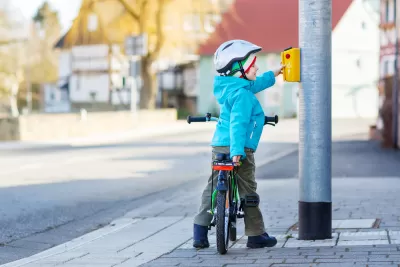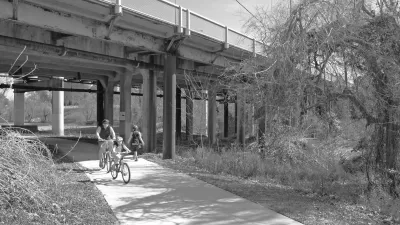A bike plan isn't meant for the peloton. Here's how you can tell.

Chris and Melissa Bruntlett share their take on "a seldom-discussed measure of a city’s bike-friendliness: the speed at which its cyclists travel." Their opinion on the subject is stated thusly: "the slower the people on bikes were moving, the more mature the bicycle culture, and the better the conditions for cycling."
The difference is played out in the difference between what people consider "cyclists" and the rest of us. "Cycling" is considered a sport—one that requires lycra at the lowest levels and performance enhancing drugs at the highest levels. The Bruntletts, however, are more concerned with the rest of us, and they noticed four signifiers that exhibit a mature city for biking: the kinds of people biking, the types of bikes they are riding, the kinds of trips people on bikes are taking, and the kinds of bike infrastructure available in the city. The Bruntletts describe how the first of those four points works:
Upon arrival in a new city, a cursory glance at the types of people choosing to cycle there will tell you a great deal about its bike-friendliness. The places with the widest variety of ages and abilities can be considered – without exception – the most successful, with a greater number of women, children, and seniors on bikes a surefire sign you’re doing something right. That diversity brings with it a slower-paced, more relaxed environment, that is far more welcoming to the “interested but concerned” crowd.
On the last point, according to the Bruntletts, certain types of bike infrastructure are built to ensure that people on bikes feel willing and able to slow down and enjoy the ride. The final twist of this argument: that the first three of those points don't become a reality until the last one does.
FULL STORY: In praise of slow cycling

Alabama: Trump Terminates Settlements for Black Communities Harmed By Raw Sewage
Trump deemed the landmark civil rights agreement “illegal DEI and environmental justice policy.”

Planetizen Federal Action Tracker
A weekly monitor of how Trump’s orders and actions are impacting planners and planning in America.

Why Should We Subsidize Public Transportation?
Many public transit agencies face financial stress due to rising costs, declining fare revenue, and declining subsidies. Transit advocates must provide a strong business case for increasing public transit funding.

Understanding Road Diets
An explainer from Momentum highlights the advantages of reducing vehicle lanes in favor of more bike, transit, and pedestrian infrastructure.

New California Law Regulates Warehouse Pollution
A new law tightens building and emissions regulations for large distribution warehouses to mitigate air pollution and traffic in surrounding communities.

Phoenix Announces Opening Date for Light Rail Extension
The South Central extension will connect South Phoenix to downtown and other major hubs starting on June 7.
Urban Design for Planners 1: Software Tools
This six-course series explores essential urban design concepts using open source software and equips planners with the tools they need to participate fully in the urban design process.
Planning for Universal Design
Learn the tools for implementing Universal Design in planning regulations.
Caltrans
Smith Gee Studio
Institute for Housing and Urban Development Studies (IHS)
City of Grandview
Harvard GSD Executive Education
Toledo-Lucas County Plan Commissions
Salt Lake City
NYU Wagner Graduate School of Public Service





























